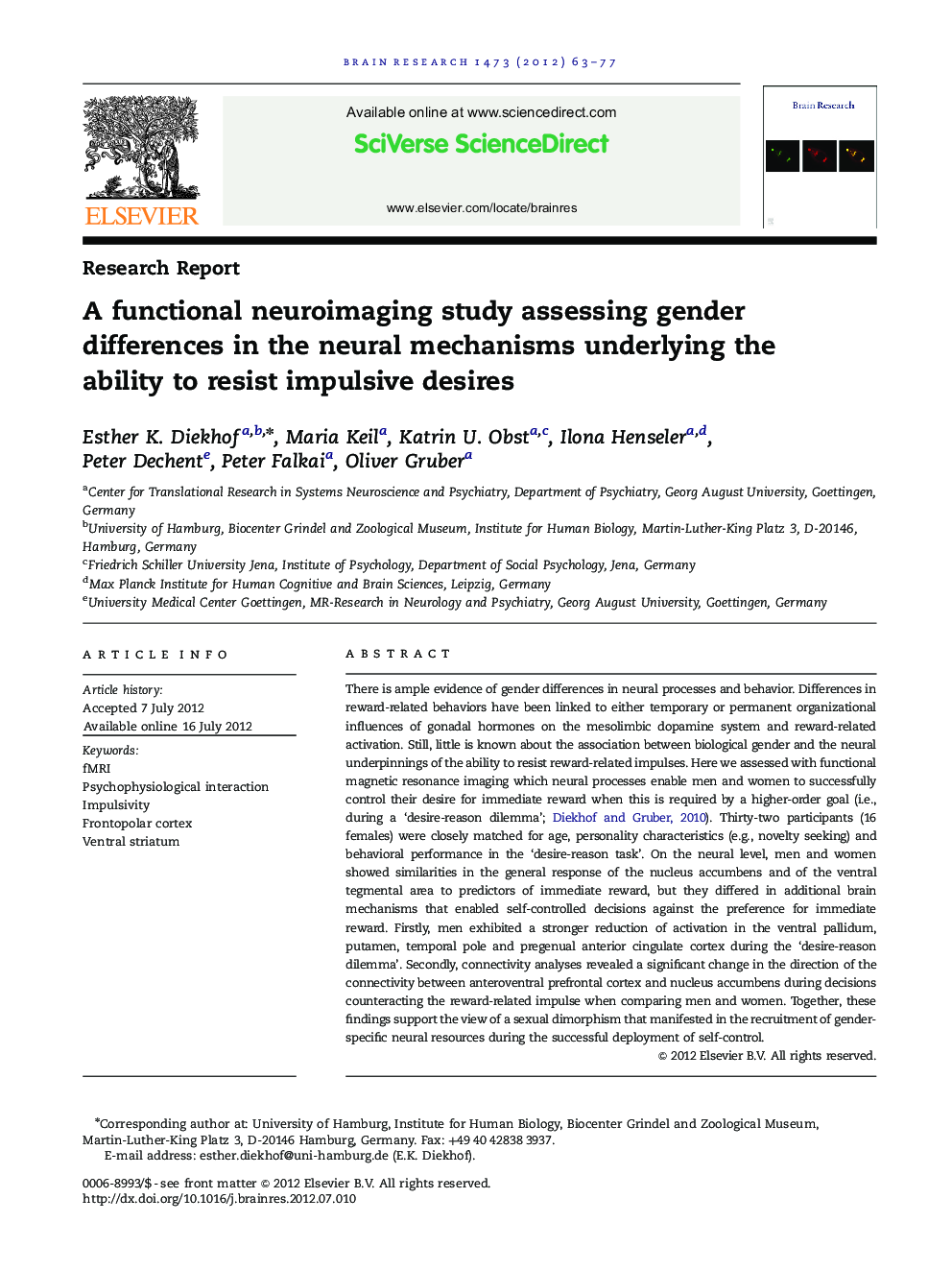| Article ID | Journal | Published Year | Pages | File Type |
|---|---|---|---|---|
| 4325098 | Brain Research | 2012 | 15 Pages |
There is ample evidence of gender differences in neural processes and behavior. Differences in reward-related behaviors have been linked to either temporary or permanent organizational influences of gonadal hormones on the mesolimbic dopamine system and reward-related activation. Still, little is known about the association between biological gender and the neural underpinnings of the ability to resist reward-related impulses. Here we assessed with functional magnetic resonance imaging which neural processes enable men and women to successfully control their desire for immediate reward when this is required by a higher-order goal (i.e., during a ‘desire-reason dilemma’; Diekhof and Gruber, 2010). Thirty-two participants (16 females) were closely matched for age, personality characteristics (e.g., novelty seeking) and behavioral performance in the ‘desire-reason task’. On the neural level, men and women showed similarities in the general response of the nucleus accumbens and of the ventral tegmental area to predictors of immediate reward, but they differed in additional brain mechanisms that enabled self-controlled decisions against the preference for immediate reward. Firstly, men exhibited a stronger reduction of activation in the ventral pallidum, putamen, temporal pole and pregenual anterior cingulate cortex during the ‘desire-reason dilemma’. Secondly, connectivity analyses revealed a significant change in the direction of the connectivity between anteroventral prefrontal cortex and nucleus accumbens during decisions counteracting the reward-related impulse when comparing men and women. Together, these findings support the view of a sexual dimorphism that manifested in the recruitment of gender-specific neural resources during the successful deployment of self-control.
► Women and men differed in the brain mechanisms that enabled self-controlled decisions. ► During self-control men showed a stronger decrease in some limbic regions than women. ► An increased frontostriatal coupling helped men to control immediate reward desiring. ► Women showed the reverse frontostriatal connectivity during a ‘desire-reason dilemma’.
